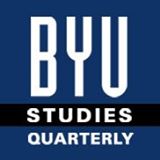BYU Studies

Keywords
George Thomas Sevey, Mormons, Mexico, North, History, 20th century, Revolution, Refugees, Forced migration
Abstract
During July and August 1912, thousands of Mormon colonists fled the turmoil of the Mexican Revolution (fig. 1). As bishop of the Colonia Chuichupa ward, George Sevey led his ward members out of war-torn Mexico and into the United States. The scene was not unfamiliar. During the nineteenth century, Latter-day Saints had fled from Missouri and Illinois, and thousands more had experienced the great exodus across the plains to the Salt Lake Valley. Such epic events enrich the heritage of Latter-day Saints, providing cultural meaning and shared identity forged by hardship and tragedy. Perhaps the effort to chronicle flight from persecution and intolerance grows naturally from a scriptural tradition that highlights the journeys of strangers and pilgrims looking for safe havens in an insecure world. Bishop George Sevey's understated leadership role in the exodus of his ward suggests that he did not imagine himself a larger-than-life Nephi, nor did he suppose his ward's exodus had great relevance to mankind. But, like Nephi, he thought it worthy of recording for posterity. Bishop Sevey's memoir of the exodus (pp. 77-101 below) captures a lesser-known chapter of Mormon history and provides a snapshot view of the dynamics of Mormon ward leadership in an extreme situation.
Recommended Citation
Landon, Michael N.
(2004)
"“We Navigated by Pure Understanding”: Bishop George T. Sevey's Account of the 1912 Exodus from Mexico,"
BYU Studies: Vol. 43:
Iss.
2, Article 7.
Available at:
https://scholarsarchive.byu.edu/byusq/vol43/iss2/7
